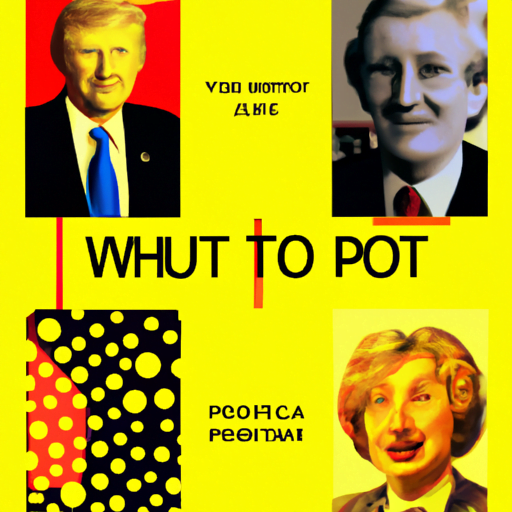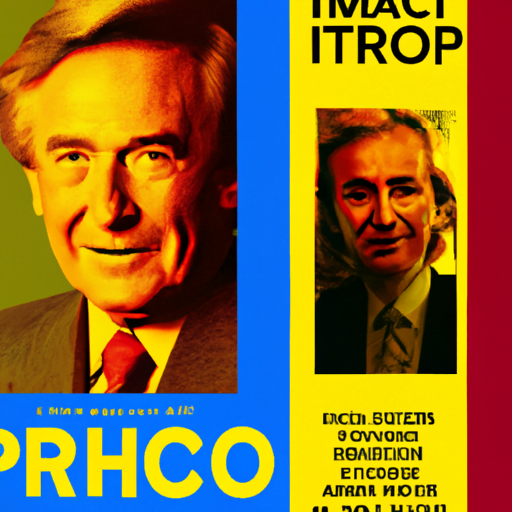
-
Table of Contents
- The Impact of Typography in Political Campaigns
- The Power of Typography in Creating a Visual Identity
- Typography as a Communication Tool
- Case Studies: Typography in Political Campaigns
- 1. “Yes We Can” – Barack Obama’s 2008 Campaign
- 2. “Make America Great Again” – Donald Trump’s 2016 Campaign
- The Role of Typography in the Digital Age
- Summary
The Impact of Typography in Political Campaigns

Typography plays a crucial role in political campaigns, influencing how candidates are perceived and their messages are conveyed to the public. From campaign logos to posters, websites, and social media graphics, the choice of typography can shape the overall image of a candidate and impact voter perception. In this article, we will explore the significance of typography in political campaigns and examine how it can be used strategically to create a strong visual identity, evoke emotions, and communicate key messages effectively.
The Power of Typography in Creating a Visual Identity
Typography is a powerful tool for creating a visual identity that distinguishes a candidate from their competitors. A well-designed campaign logo can instantly convey a candidate’s values, personality, and political ideology. For example, Barack Obama’s 2008 presidential campaign logo, featuring a bold, modern typeface with a rising sun symbol, communicated a message of hope, progress, and optimism. The logo became instantly recognizable and helped to establish Obama’s brand.
Similarly, typography can be used to evoke emotions and create a sense of trust and credibility. Serif typefaces, such as Times New Roman or Garamond, are often associated with tradition, authority, and reliability. On the other hand, sans-serif typefaces, like Helvetica or Arial, convey a more modern, clean, and approachable image. The choice of typeface can influence how voters perceive a candidate’s character and values.
Typography as a Communication Tool
Beyond creating a visual identity, typography is a powerful communication tool in political campaigns. The way text is presented can significantly impact how messages are understood and remembered by voters. Here are some key ways typography can be used to enhance communication:
- Readability: Choosing legible typefaces and font sizes is essential to ensure that campaign materials are easily readable. Complex or overly decorative fonts can hinder comprehension and alienate voters.
- Hierarchy: Typography can be used to establish a clear hierarchy of information, guiding voters’ attention to the most important messages. Headlines, subheadings, and body text can be differentiated using font size, weight, and style.
- Emphasis: Bold, italic, or underlined text can be used to emphasize key points or calls to action. By strategically highlighting certain words or phrases, candidates can draw attention to their most compelling arguments or policy proposals.
- Consistency: Maintaining consistent typography across all campaign materials helps to reinforce the candidate’s brand and message. Consistency builds recognition and trust among voters.
Case Studies: Typography in Political Campaigns
Several political campaigns have successfully utilized typography to create a strong visual identity and effectively communicate their messages. Let’s examine two notable case studies:
1. “Yes We Can” – Barack Obama’s 2008 Campaign
Barack Obama’s 2008 presidential campaign is widely regarded as a masterclass in branding and typography. The campaign’s slogan, “Yes We Can,” was prominently featured in various campaign materials, including posters, banners, and merchandise. The typography used for the slogan, a bold, uppercase sans-serif typeface, conveyed a sense of confidence, unity, and empowerment. The simplicity and repetition of the phrase helped to reinforce the message and create a strong emotional connection with voters.
2. “Make America Great Again” – Donald Trump’s 2016 Campaign
Donald Trump’s 2016 presidential campaign also made effective use of typography to create a powerful visual identity. The campaign’s slogan, “Make America Great Again,” was emblazoned on red baseball caps worn by supporters and featured prominently in campaign materials. The typography used for the slogan, a bold, uppercase serif typeface, evoked a sense of nostalgia, tradition, and strength. The simplicity and repetition of the phrase helped to make it memorable and easily recognizable.
The Role of Typography in the Digital Age
In today’s digital age, typography plays an even more significant role in political campaigns. With the rise of social media and online advertising, candidates have a multitude of platforms to communicate their messages. Here are some key considerations for typography in the digital realm:
- Responsive Design: Campaign websites and social media graphics must be designed with responsive typography to ensure optimal legibility across different devices and screen sizes.
- Accessibility: Candidates should prioritize accessibility by choosing typefaces that are easy to read for individuals with visual impairments. Additionally, providing alternative text for images and captions for videos can enhance inclusivity.
- Visual Consistency: Maintaining consistent typography across various digital platforms helps to reinforce the candidate’s brand and message. This includes using the same typefaces, font sizes, and colors.
- Engagement: Typography can be used strategically to capture attention and encourage engagement on social media. Eye-catching headlines, well-designed infographics, and visually appealing quotes can help to increase shares, likes, and overall campaign visibility.
Summary
Typography plays a significant role in political campaigns, shaping a candidate’s visual identity and influencing voter perception. By carefully selecting typefaces, font sizes, and styles, candidates can create a strong brand image, evoke emotions, and effectively communicate their messages. Typography is a powerful tool for establishing credibility, guiding attention, and emphasizing key points. Successful political campaigns, such as Barack Obama’s 2008 campaign and Donald Trump’s 2016 campaign, have utilized typography to create memorable slogans and visual identities. In the digital age, typography is even more crucial, with candidates needing to consider responsive design, accessibility, visual consistency, and engagement on various digital platforms. By understanding the impact of typography and using it strategically, political campaigns can effectively connect with voters and convey their messages with clarity and impact.
